This is a follow up to an earlier post I made here. Below is the relevant portion of the schematic for this issue (stuff to the left of Y1 is in original post if necessary).

I have finally gotten this circuit working somewhat reliably with one exception. The original device (read layout) is intended to work at 5V. I have the original device and can verify that it does work properly at 5V. I just got my PCB back which has a copy of the circuit. I populated the board and fired it up and it seemed to work like a champ. I had both (original and copy) wired up on the bench and was looking at the output of each channel on the scope. Things looked great.
Then, I happened to notice that I was powering up the two from 3.3V as I've been switching between projects and did not change the power supply voltage when I last switched. I begin to adjust the voltage up toward 5.0V and I notice that right about 3.8V the output of the copy goes low and stays low up to 5.0V. I lower the voltage and it goes high (but toggles low when IR present) at about 3.6V. So, the circuit works at a supply voltage < ~ 3.6 V.
With the voltage set at 5.0V I start to probe around comparing all signals to the original. Following the individual inverter stages things look identical right up to the input of U1E (pin 11). As I vary the voltage across that threshold of roughly 3.6V that pin toggles. So, next I want to take a look at the output of U1D (pin 8). I found it quite difficult to probe this and watch the scope at the same time as the probe would slip off the contact point. So, I decided to take a piece of 3" wire wrap and tack it onto the pin so that I could grab a hold of it with the probe. I did that, fired it up and the circuit behaves quite nicely! It operates as expected. At this point I don't even have the probe on the wire I tacked onto the pin. So, the addition of this wire hanging from the pin has solved my issue.
I have two screen shots of the oscilloscope. The first is the screen shot with no wire tacked on to the output of U1D.

The second is the screen shot with a wire tacked to the output of U1D.

The blue trace is the output of the entire circuit (Q3 Collector). The magenta trace is the input of U1E (or cathode of D4). You'll notice I gave each two pulses from the transmitter. In the snapshot without the wire tacked you'll notice that the steady state is quite noisy.
Of course, hanging a wire off this pin is not a real solution and I don't understand why it works so that is the reason for my question. What should I do here? Just thinking out loud that it would be nice if I could fix a 'bias point' on the input of U1E so that minimal IR receive is necessary for a high.
EDIT:
There seems to be a 32.768 kHz oscillation at U1D (pin 8) with no IR signal present. This oscillation kicks in when the supply voltage is roughly 3.1V. By 3.6V to 3.8V it is prevalent enough to cause the output of U1E (pin 10) to drive low.